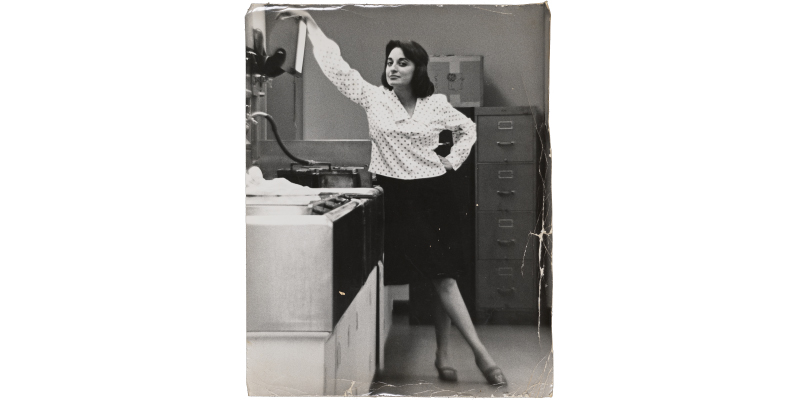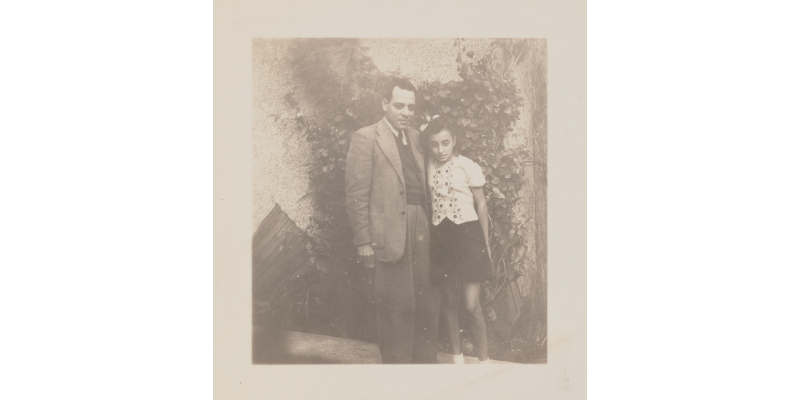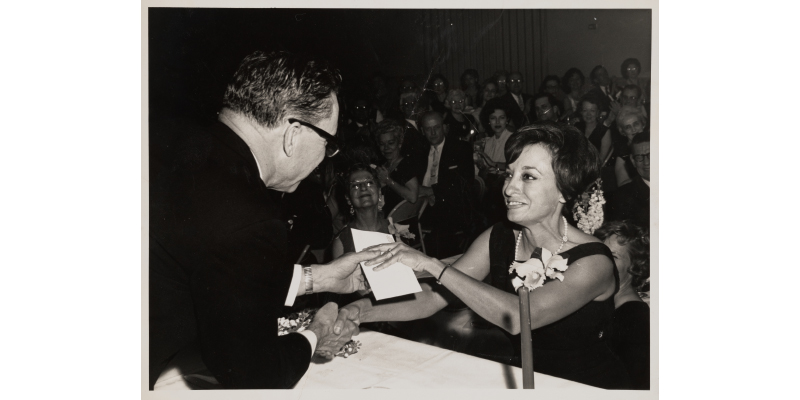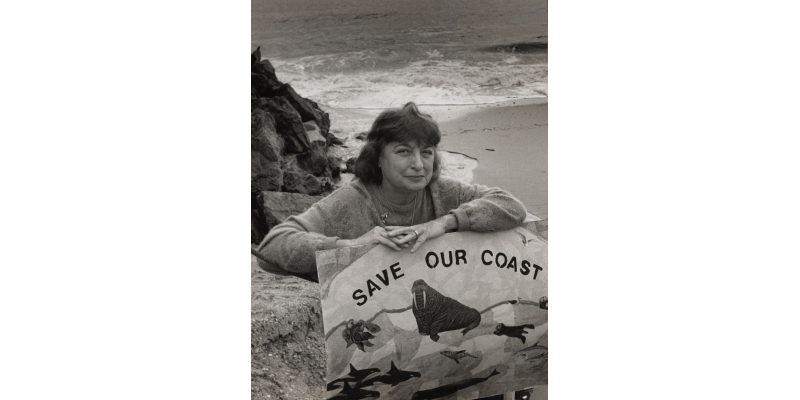Mary Frampton Digital Collection Now Available

The Mary Frampton Digital Collection is now live on the Pepperdine Libraries Digital Collections website. Mary Frampton (1930–2006) was a photojournalist and environmental activist who lived
and worked in Malibu and Los Angeles. Her papers, and the digital collection, are
organized into three categories: personal files, professional files, and Save Our
Coast files.
Browsing through her personal files, you'll find photographs from Mary's childhood
in San Bernardino, California. Her father, Eugenio Nogueras, was born in Puerto Rico
and was the editor of the Spanish-language newspaper El Sol de San Bernardino. His advocacy for racial equality strongly impacted Mary, who wrote about it during
her formative years. Her essay, "What's America to Me?," one of Mary's first journalistic
pieces, won the national "Quiz Kids" essay competition in 1947. You can learn more
about Eugenio through an extensive collection of his letters to Mary and his wife,
Edith Hethcock Nogueras. Edith was an award-winning sculptor who designed baby dolls
for the Horsman Doll Company. Mary kept some of her mother's drawings and photographs
of the dolls she created.

The professional files contain some of Mary's early photographs and interviews with
celebrities like Jerry Lewis, Bob Hope, and Mitzi Gaynor, which she sold to national
magazines, including LIFE and Photoplay. After beginning her career with the San Bernardino Sun-Telegram, Mary was hired by the Los Angeles Times in 1956 as one of the newspaper's first female staff photographers, a role she held
for nearly three decades. It was there she met her husband, editor Robert Frampton.
In 1966, she won the Penney-Missouri Journalism Award for Women's Page Photographer
of the Year, the first ever given in that category.

Mary moved to Malibu in 1970 and remained active in local politics and environmental
activism there for the rest of her life. She co-founded Save Our Coast in 1987 with
activist and Malibu Township Council member Jo Ruggles. Their effort was in response
to growing pollution along the Malibu coast and a Los Angeles proposal to build a
sewer in Malibu. In the Save Our Coast files, you'll find posters, fliers, resolutions,
photographs, and correspondence created by the organization as it led protests, funded
scientific research, lobbied for Malibu politicians to take action, and raised awareness
of environmental issues in local communities. You'll also find some materials about
Malibu's campaign for cityhood, another initiative in which Mary was involved. 
Perhaps no one knows this digital collection as well as Pepperdine senior Ali Levens,
who participated in creating the Mary Frampton digital collection. Ali has worked
in the Digital Projects Lab at Payson Library since she began her studies at Pepperdine.
This was the first time, however, that she assisted with a digital collection through
every stage of the process. While I offered instruction and guidance, Ali was the
one who became most familiar with all of the items in the collection – digitizing,
organizing, and describing them. I was especially excited to give Ali this project
considering her and Mary's shared interests: Ali is a journalism major and sustainability
minor working for The Pepperdine Graphic, reporting on environmental issues and policies
on campus and throughout Malibu.
I asked Ali to reflect on her work and share some insights she's learned about Mary Frampton over the last six months.
Bailey Berry: Tell us a little bit about the work you did on the Mary Frampton collection
Ali Levens: I digitized the Mary Frampton collection from start to finish. I photographed, edited, and organized over 600 individual images. After uploading images to the client software, I entered metadata for all objects, such as titles, descriptions, dimensions, and subject tags. I also transcribed letters, articles, and notes. Then, I worked with you to ready the collection for publishing online.
B. B.: How would you describe Mary Frampton? What did you learn about her after working on her collection?
A. L.: Mary Frampton was a dedicated person. She was one of the first female staff photographers for the L.A. Times in the mid-20th century – a feat that, I presume, took great courage and perseverance, paving the way for women and Latina journalists. When she left the Times, Mary transitioned to environmental activism in Malibu – again, not an easy task to accomplish for a municipality that recently gained cityhood. Judging by her collection of letters, photographs, and memorabilia, Mary made quite an impact in San Bernardino, Los Angeles, and Malibu. She was admired by those who worked with her.
B. B.: What were some of the most interesting items you discovered in the collection?
A. L.: One of the most iconic items in the collection is the photo of Mary eating oranges with actor Gregory Peck at the National Orange Show in San Bernardino. Many prints and newspaper clippings of this image are scattered throughout the collection, suggesting Mary cherished this moment greatly. Another interesting item is a copy of the City of Malibu Resolution No. 93-151, which declares Malibu as a sanctuary for preserving and protecting marine life — especially dolphins. All of Mary's efforts with Save Our Coast were finally paying dividends.

B. B.: Did you learn anything new about Malibu, journalism, activism – or anything else
of note?
A. L.: I learned quite a bit about early environmental activism in Malibu. As someone who has lived near Malibu since 2019, it is clear to me that the protection of the environment is baked into its culture, so it was shocking to learn it was not always the case. I am so glad it is this way now, thanks in part due to Mary's hard work and voice in the community.
B. B.: What did you enjoy most about this work?
A. L.: I am a journalism major and sustainability minor at Pepperdine, so cataloging Mary's impact in both those worlds was truly enjoyable. I had never worked on a collection in this much detail, so I appreciate how I feel like I got to know Mary personally.
B. B.: What did you find most challenging?
A. L.: I found it challenging to identify and write about images and documents for which we needed more context or background. This is a familiar obstacle in archiving, but I sought to provide the most complete and accurate picture of Mary's life.
B. B.: What have you learned about archives or archiving through this work?
A. L.: Before this project, I had yet to work through an entire collection from start to finish. There were projects I worked on extensively, like the M. Norvel Young collection, but I didn't get as holistic an understanding of the collection like I did for Mary Frampton. I developed a greater appreciation of the digitization process and realized the importance of tags and metadata.
B. B.: Has working on the Mary Frampton collection sparked any ideas or presented any new information you'll take with you?
A. L.: One takeaway from this project is that one person can make a difference, particularly regarding the climate crisis. Although her work didn't solve all the problems along the Malibu coast, it provided the groundwork to protect marine life. It would be a fun journalistic project to delve into the history of environmentalism in Malibu, as most of the legwork was done before it entered cityhood. Malibu's culture with sustainability is ever-evolving, so learning how that culture began sparked some interest.
I was delighted to hear this project has generated some ideas for future projects. We hope that this digital collection will continue to spark new ideas and scholarship. I'd like to thank Ali for her time and the outstanding work she did for Pepperdine Libraries.